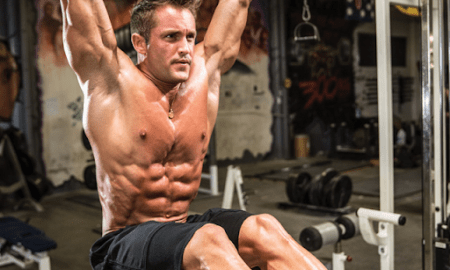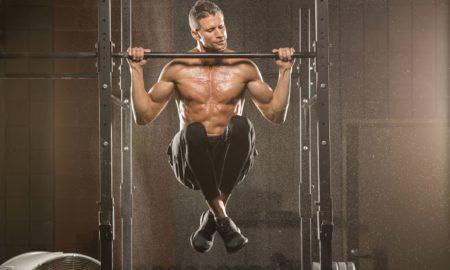Q: What exactly do the pros do when they work on the shape of their abs?
A: I doubt that they work on the shape of their abs. They know better than that. Each pro has unique muscle shapes, just as you have yours. Many of the pros have similarly shaped abs, but over the years a few of them have had unusually shaped ab formations. Ab shape is genetically determined. Although effective training will increase ab size somewhat, the shape of the muscle can’t be changed other than by medical intervention.
No matter how well-developed or nicely shaped your abs may be, if they’re covered with a thick layer of fat, you’ll never be able to see them. Even if your abs have an unusual formation, though, they’ll look terrific, provided you can see them. So the priority is visibility—and that’s determined primarily through diet.
Q: I go to the gym with my boyfriend. I have a flat butt and thin thighs. For the past year or so I’ve done lots of training with cables and machines—including leg extensions, leg curls, glute machine and adductor and abductor machines. Even so, I have a flat butt and thin thighs. What am I doing wrong?
A: Your genetic inheritance has endowed you with your basic body structure and your natural potential for muscle growth. Your body structure includes the lengths of your bones and muscle bellies, which have a huge influence on your appearance and potential for change. Although you’re complaining about a flat butt and thin thighs, many women complain about the opposite and would love to be in your situation.
The way you currently train will produce some improvement in physical conditioning but no muscle growth of substance. If you want to fill out your buttocks and thighs, you must train accordingly. Men who have developed full glutes and thighs didn’t get them from cable work and isolation machines. They built them primarily through the big exercises—typically barbell squats and leg presses. You should follow the same approach.
Shift from little exercises to big exercises—but just one per bodypart—and train them hard and with correct technique. Fully satisfy the components of recuperation, gradually build up your strength until it’s something impressive, and then you’ll give yourself a good chance of building enough muscle to make a major improvement in your lower body.
[Are you looking for health, muscle and the amazing anti-aging benefits of resistance training? Get the new e-book by Steve and Becky Holman, Old School, New Body. Read the Iron Man magazine review here.]
Q: Are lower pec and upper pec the same as pec major and pec minor?
A: No. The upper pec and lower pec are regions of the pec major. The pec minor is something else.
The pec major—pectoralis major, to use its proper name—is the large, visible muscle of the chest that connects the chest and clavicle, or collarbone, to the humerus, which is the bone between the elbow and the shoulder. The pec major adducts, flexes and rotates the humerus. It has its upper region—the clavicular head, because it’s near the clavicle—and its lower region. The incline-bench press places more stress on the upper pecs than does the regular bench press.
The pectoralis minor is the muscle beneath the pec major that connects some ribs to the scapula, or shoulder blade. It protracts the scapula and elevates the ribs.
Thoughts on freaky calves: At the gym the other day I sat on a bench resting between sets. Immediately in front of me were two young men alternating sets of barbell curls. Both were wearing shorts. I had a clear view of their calves, which were dramatically different in their genetic structure.
The inner “point” of the so-called “diamond” of the calves of one of the men was below the midpoint of his shin—freakily low. The other man’s inner “point” was way above the midpoint of his shin. The former’s calves were so full because the belly length was so long. The other guy’s calf belly was short, and thus his calf mass was high and small.
The fellow with the freakily long calf belly had an unusually large potential for calf development, but the other man had below-average potential—all due to genetic inheritance.
—Stuart McRobert
www.Hardgainer.com
Editor’s note: Stuart McRobert’s first byline in IRON MAN appeared in 1981. He’s the author of the new 638-page opus on bodybuilding, Build Muscle, Lose Fat, Look Great, available from Home Gym Warehouse, (800) 447-0008, or www.Home-Gym.com.




















You must be logged in to post a comment Login